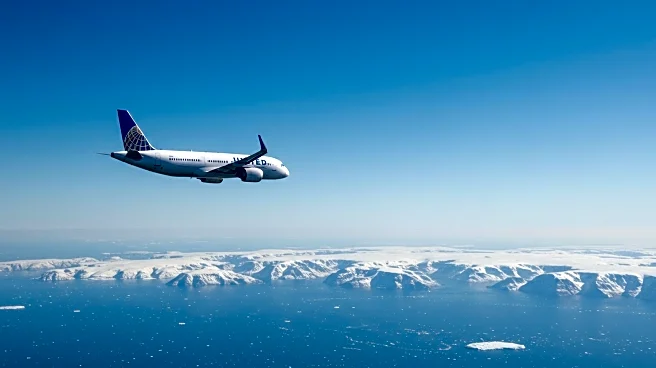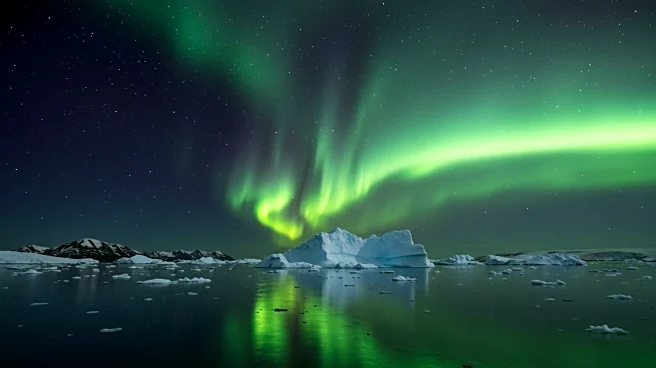What is the story about?
What's Happening?
Greenland is experiencing a surge in tourism following United Airlines' introduction of direct flights from Newark to Nuuk, the capital of Greenland. This development marks a significant shift in Greenland's accessibility, as travelers previously had to transit through Copenhagen or Reykjavik. The new direct flights have increased tourist arrivals, challenging Greenland's nascent tourism infrastructure. Despite the influx of visitors, local tour operators like Malik Marine Tours are struggling to accommodate the demand, as evidenced by canceled excursions due to insufficient participants. Greenland's tourism industry is still developing, with plans to expand and manage growth sustainably. The country aims to double its tourist numbers by 2035, extending the tourism season and spreading visitors across more communities.
Why It's Important?
The increase in direct flights to Greenland represents a pivotal moment for the country's tourism sector, potentially boosting its economy and international profile. As Greenland becomes more accessible, it could attract more visitors interested in its unique Arctic landscapes and cultural experiences. However, the rapid growth poses challenges, including the need for improved infrastructure and accommodation options. The tourism boom could lead to economic benefits for local businesses and communities, but it also requires careful management to avoid overwhelming the region's resources. The situation highlights the delicate balance between promoting tourism and preserving Greenland's environment and cultural heritage.
What's Next?
Greenland plans to continue developing its tourism infrastructure, with two additional international airports scheduled to open in 2026. The country is focused on expanding its capacity to handle more tourists while ensuring sustainable practices. Airlines like United are expected to resume seasonal flights next summer, indicating ongoing interest in Greenland as a travel destination. Local stakeholders, including government and tourism officials, will need to address the challenges of accommodating increased visitor numbers, such as expanding hotel capacity and enhancing tour offerings. The success of these initiatives will be crucial in maintaining Greenland's appeal and managing its growth responsibly.
Beyond the Headlines
The surge in tourism to Greenland also has geopolitical implications, as increased international interest could influence discussions about the island's autonomy and its relationship with Denmark. The tourism boom may also impact Greenland's cultural identity, as the influx of visitors introduces new dynamics to local communities. Additionally, the environmental impact of increased tourism must be considered, with efforts needed to protect Greenland's fragile ecosystems from potential harm. The development of tourism infrastructure presents opportunities for innovation in sustainable travel practices, setting a precedent for other remote destinations facing similar challenges.
AI Generated Content
Do you find this article useful?












